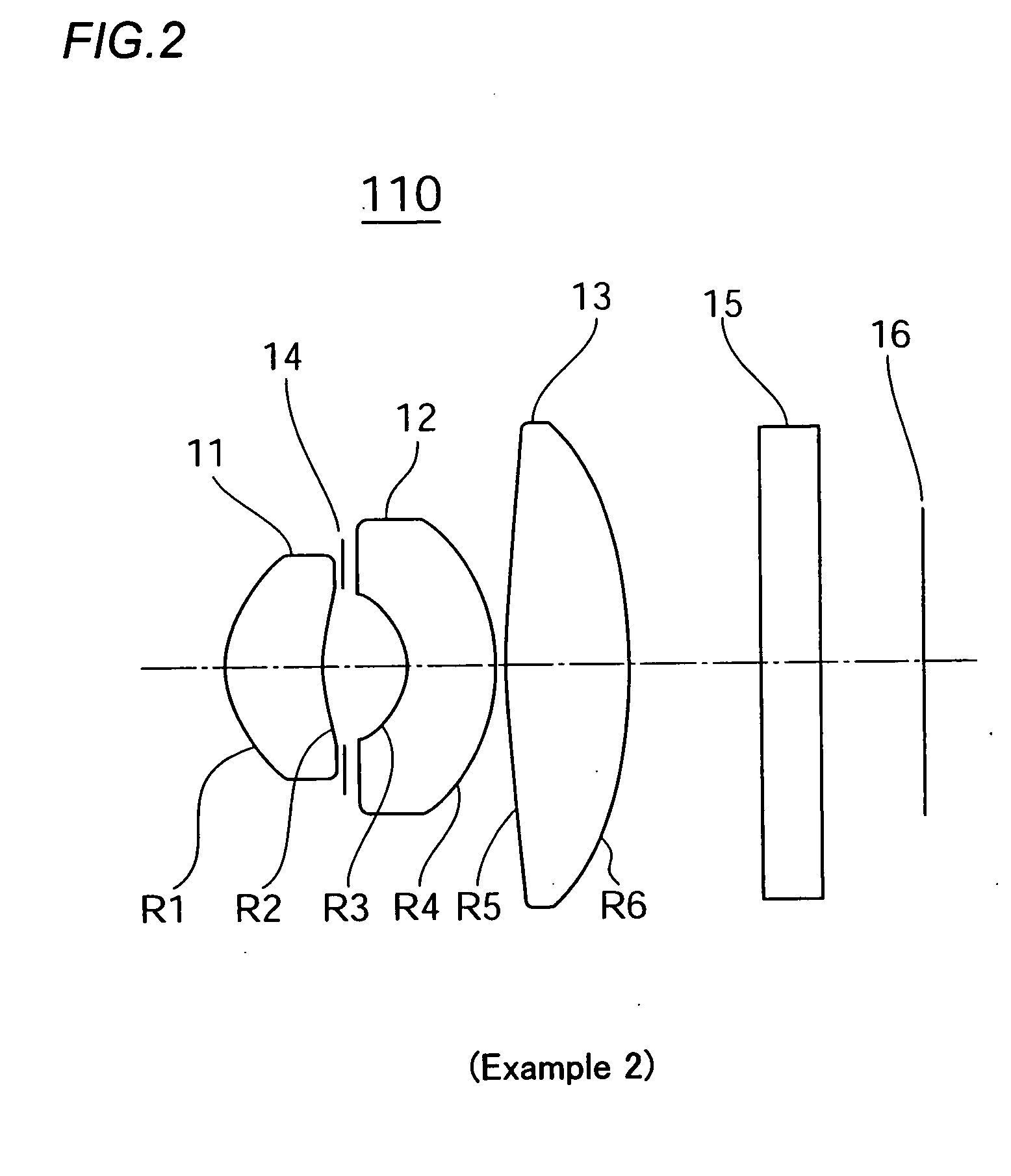Imaging lens
a lightweight, imaging lens technology, applied in the field of imaging lenses, can solve the problem that the back focus of the imaging lens must be extended to a certain degree, and achieve the effect of substantial aperture efficiency and satisfactory correction of distortion
- Summary
- Abstract
- Description
- Claims
- Application Information
AI Technical Summary
Benefits of technology
Problems solved by technology
Method used
Image
Examples
example 1
[0041] An imaging lens according to Example 1 in which the first invention of the present application is applied is depicted in FIG. 1. An imaging lens 100 of the present example has, arranged in sequence from an object side towards an imaging surface 6, a first lens 1 whose meniscus has a positive power and whose convex surface faces the object side; a second lens 2 whose meniscus has a negative power and whose concave surface faces the object side, positioned subsequently via an aperture 4; and a third lens 3 having a positive power; and the second and third lenses function as correction lenses. In the present example, all of the lens surfaces on both sides of lenses 1, 2, and 3 are aspherical. In the present example, a cover glass 5 is mounted between the second lens surface R6 of the third lens 3 and the imaging surface 6.
[0042] In the third lens 3, an aspherical inflection point is provided in the location of substantially 50% of the aperture diameter in the first lens surface...
example 2
[0053]FIG. 2 is a structural diagram of an imaging lens according to Example 2 in which the first invention of the present application is applied. In an imaging lens 110 of the present example, a first lens 11 with a positive meniscus whose convex surface faces an object side, a second lens 12 with a negative meniscus whose concave surface faces the object side, positioned via an aperture 14, and a third lens 13 that is a biconvex lens are arranged in sequence from the object side towards an imaging surface 16. An aspherical inflection point is provided in the location of substantially 48% of the lens aperture diameter in the first lens surface R5 of the third lens 13 on the object side. The second lens surface R6 thereof on the image side is formed as an extension of the convex surface. Forming the lens surface of the third lens 13 in this manner allows the maximum exit angle of the principal ray to be 23.5 degrees with respect to the total angle of view of 63 degrees. The lens sur...
example 3
[0061] An imaging lens according to Example 3 in which the first invention of the present application is applied is shown in FIG. 5. An imaging lens 120 of the present example has, arranged in sequence from an object side towards an imaging surface 26, a first lens 21 whose meniscus has a positive power and whose convex surface faces the object side; a second lens 22 whose meniscus has a negative power and whose concave surface faces the object side, positioned subsequently via an aperture 24; and a third lens 23 having a negative power; and the second and third lenses function as correction lenses. A cover glass 25 is mounted between the third lens 23 and the imaging surface 26. In the third lens 23, the second lens surface R6 on the side of the imaging surface is formed so that the annular zone of the lens periphery forms a convex surface towards the imaging surface side, and the maximum exit angle of the principal ray is adjusted to 24 degrees or less.
[0062] In the present examp...
PUM
 Login to View More
Login to View More Abstract
Description
Claims
Application Information
 Login to View More
Login to View More - R&D
- Intellectual Property
- Life Sciences
- Materials
- Tech Scout
- Unparalleled Data Quality
- Higher Quality Content
- 60% Fewer Hallucinations
Browse by: Latest US Patents, China's latest patents, Technical Efficacy Thesaurus, Application Domain, Technology Topic, Popular Technical Reports.
© 2025 PatSnap. All rights reserved.Legal|Privacy policy|Modern Slavery Act Transparency Statement|Sitemap|About US| Contact US: help@patsnap.com



